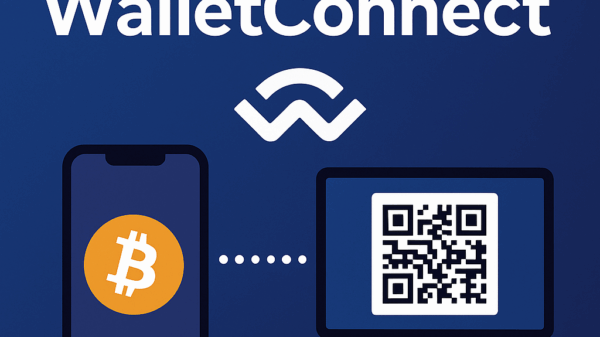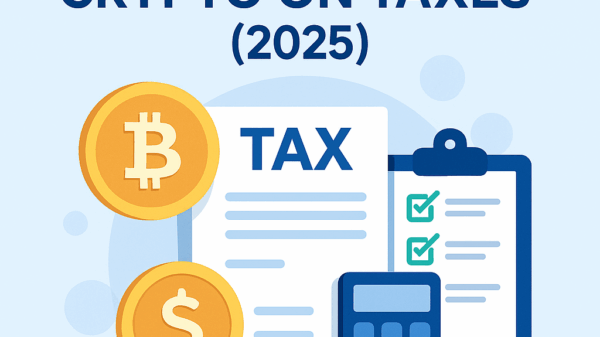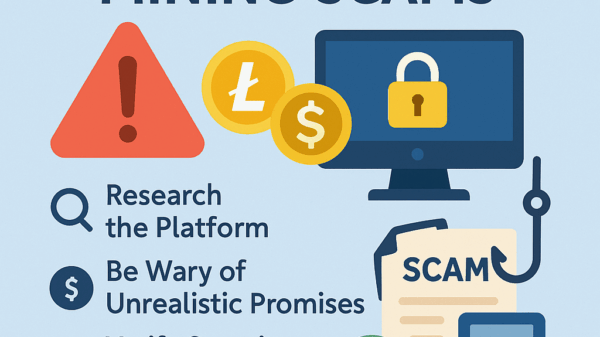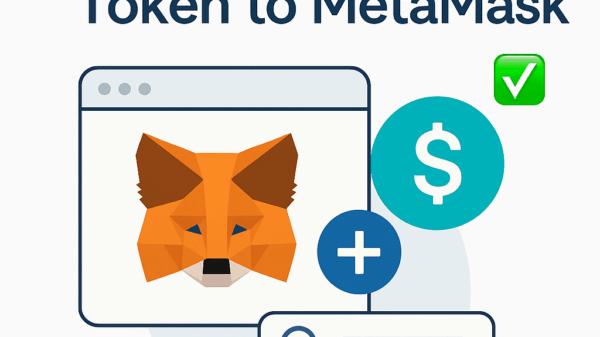How to Understand Public and Private Keys
By Jason Miller – Crypto Writer 10.expert 🧠 Covering Bitcoin, altcoins, blockchain & Web3.
As a crypto writer and analyst, one of the foundational concepts that often baffles newcomers to the world of Bitcoin, altcoins, and blockchain is the relationship between public and private keys. Unlike traditional banking where an institution manages your account, in crypto, you are your own bank. This self-sovereignty is powered by a clever cryptographic pairing that forms the backbone of security and ownership.
In 2025, while user interfaces for crypto wallets have become more abstract, simplifying the user experience, the underlying principles of public and private keys remain critical. A true understanding of how these keys work is not just academic; it’s essential for grasping why seed phrase security is paramount, why certain scams are so effective, and why “not your keys, not your crypto” is the industry’s golden rule. This isn’t just tech jargon; it’s the very mechanism that secures your digital wealth.
Let’s demystify public and private keys, understanding their roles and how they work together to secure your crypto.
How to Understand Public and Private Keys: The Cryptographic Core of Your Crypto Ownership 🔐🔑
Public and private keys are fundamental to how cryptocurrency works. Grasping their relationship is crucial for secure and confident participation in the crypto world.
The Core Concept: Asymmetric Cryptography (Public-Key Cryptography) 💡
- Paired Keys: Crypto relies on a mathematical system where two unique, but mathematically linked, keys are generated: a public key and a private key.
- One-Way Derivation: The public key can be mathematically derived from the private key, but it’s virtually impossible to derive the private key from the public key. This is a “one-way function.”
Your Private Key: The Secret Master Key to Your Funds 🤫
- Analogy: Your Mailbox Key: Think of your private key as the physical key to your mailbox. Only you have it, and it grants you access to what’s inside.
- Random Number: A private key is essentially a very large, randomly generated number (typically 256 bits, represented as a long hexadecimal string). The vastness of this number space makes it practically impossible to guess.
- Absolute Control: Whoever possesses the private key controls the funds associated with it. If someone gets your private key, they can spend your crypto.
- Signing Transactions: When you want to send crypto, your private key is used to “digitally sign” the transaction. This proves you are the rightful owner authorizing the transfer.
Your Public Key: For Receiving and Verification 🌐

- Analogy: Your Mailbox’s Street Address: Your public key is like the street address of your mailbox. Anyone can see it, and anyone can send you mail (crypto) to it.
- Derived from Private Key: The public key is generated from your private key using cryptographic algorithms (e.g., Elliptic Curve Digital Signature Algorithm – ECDSA).
- Publicly Shareable: It’s safe to share your public key. Sharing it allows others to send you crypto and allows the network to verify that a transaction signed by your private key truly came from you.
- Verification Only: A public key cannot be used to spend or move funds; it’s solely for receiving and verifying signatures.
Wallet Addresses: The User-Friendly Version of Your Public Key 📍
- Shortened for Convenience: A wallet address is a shorter, more user-friendly representation of your public key (or a hash of your public key).
- Commonly Shared: This is the string of characters you typically share with others to receive crypto (e.g.,
1A1zP1eW5Qujhb...for Bitcoin,0x742d35Cc66...for Ethereum). - Network Specific: Wallet addresses are tied to specific blockchains and often have distinct formats (e.g., Bitcoin, Ethereum, Solana addresses look different).
How They Work Together: The Digital Signature Process ✍️
- Initiating a Send: When you initiate a transaction (e.g., “send 1 BTC to Alice”), your wallet software takes the transaction details and “signs” them with your private key.
- Verification: This signed transaction (which does not contain your private key) is then broadcast to the blockchain network.
- Network Validation: Other computers (nodes) on the network use your publicly available public key (derived from your address) to verify that the signature is valid and that the transaction was indeed authorized by the owner of the funds.
- Immutable Record: Once verified, the transaction is added to a block and permanently recorded on the blockchain.
The Role of the Seed Phrase (Mnemonic Phrase) 🌱
- Master Private Key: Your 12 or 24-word seed phrase is a human-readable representation of a master private key.
- Hierarchical Deterministic (HD) Wallets: Most modern wallets are HD wallets, meaning a single seed phrase can deterministically generate an infinite number of private key/public key pairs (and thus addresses) from that one master key.
- Your Recovery Key: Losing your seed phrase is equivalent to losing access to all your private keys and all your crypto. Securing it offline is paramount.
Security Implications: The Private Key is Paramount 🛡️
- “Not Your Keys, Not Your Crypto”: This fundamental crypto mantra means if you don’t control your private keys (or the seed phrase that generates them), you don’t truly own your crypto. Centralized exchanges, for example, hold your private keys for you.
- Compromise is Catastrophic: If your private key or seed phrase is exposed, your funds can be stolen instantly and irreversibly.
- Hardware Wallets: These devices are designed to keep your private keys isolated offline, never exposing them to the internet, even when signing transactions.
- The Ultimate Red Flag: No legitimate entity (wallet provider, exchange support, project team) will ever ask for your private key or seed phrase. Anyone who does is a scammer.
Derivation: Public from Private, Not Vice Versa 🔄
- Mathematical Function: It’s computationally trivial to derive a public key from a private key.
- Asymmetric Security: It is computationally infeasible (takes billions of years with current technology) to reverse-engineer a private key from a public key or wallet address. This one-way street is the core of the security.
Key Pairs for Different Blockchains ⛓️
- Often Interoperable (Seed Phrase): A single BIP39 seed phrase can often generate private keys for multiple different cryptocurrencies (e.g., Bitcoin, Ethereum) if they use compatible cryptographic standards.
- Different Address Formats: While the underlying private key might be derived from the same seed, the resulting public keys and wallet addresses will look different for each blockchain.
Encryption of Private Keys 🔒
- Password Protection: When you set a password for a software wallet, you are usually encrypting the private keys (or seed phrase) stored locally on your device. The password is the key to decrypting them.
- Not a Substitute for Seed Phrase: Forgetting this password means you can’t access the wallet locally, but if you have your seed phrase, you can always restore it elsewhere.
The Analogy of a Digital Safe 🏦
- Private Key: The unique combination or physical key to your digital safe.
- Public Key: The serial number of your safe, which identifies it publicly, allowing others to send items to it, but not open it.
- Wallet Address: The convenient label or name tag on your safe, making it easier to send things to.
Immutability and Non-Repudiation 🖊️
- Irreversible: Once a transaction is signed with your private key and confirmed on the blockchain, it’s virtually irreversible.
- Undeniable: The digital signature created by your private key provides non-repudiation, meaning you cannot later deny having authorized the transaction.
Importance of Randomness in Key Generation 🎲
- Entropy is Key: The security of your private key (and thus your crypto) relies on it being truly random. If an attacker could guess or predict your private key, your funds would be vulnerable.
- Reputable Wallets: This is why it’s crucial to use reputable wallet software or hardware wallets that employ strong randomness sources for key generation.
Protecting Your Private Key: A Lifelong Task 🛡️✨
- Cold Storage: Store private keys offline using hardware wallets or paper/metal backups.
- No Digital Exposure: Never store private keys or seed phrases on internet-connected devices, email, cloud services, or take photos of them.
- Multi-Factor Authentication: Use 2FA where available to protect accounts that might hold keys (e.g., centralized exchanges).
Understanding public and private keys is not just about technical knowledge; it’s about internalizing the principles of self-custody and digital sovereignty. Armed with this understanding, you become a far more secure and confident participant in the decentralized future.







